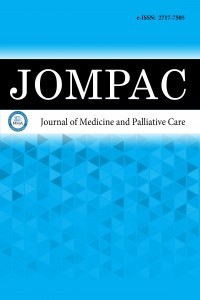1.
Orbay JL, Cambo RA. Biomechanical factors in stability of theforearm. Hand Clin. 2020;36(4):407-415. doi: 10.1016/j.hcl.2020.06.001
2.
LaStayo PC, Lee MJ. The forearm complex: anatomy,biomechanics and clinical considerations. J Hand Ther.2006;19(2):137-144. doi: 10.1197/j.jht.2006.02.002
3.
Soubeyrand M, Assabah B, Bégin M, Laemmel E, Dos SantosA, Crézé M. Pronation and supination of the hand: anatomyand biomechanics. Hand Surg Rehabil. 2017;36(1):2-11. doi:10.1016/j.hansur.2016.09.012
4.
Hong DY, Berube ER, Strauch RJ. Non-operative management ofadult both bone forearm fractures - a case report and literaturereview. J Orthop Case Rep. 2020;10(7):53-56. doi: 10.13107/jocr.2020.v10.i07.1916
5.
Dodge HS, Cady GW. Treatment of fractures of the radius andulna with compression plates. J Bone Joint Surg Am. 1972;54(6):1167-1176.
6.
Blazevic D, Bencic I, Cuti T, et al. Intramedullary nailing of adultforearm fractures: results and complications. Injury. 2021;52(Supplement 5):S44-S48. doi: 10.1016/j.injury.2020.11.012
7.
Gadegone W, Salphale YS, Lokhande V. Screw elasticintramedullary nail for the management of adult forearmfractures. Indian J Orthop. 2012;46(1):65-70. doi: 10.4103/0019-5413.91637
8.
Schulte LM, Meals CG, Neviaser RJ. Management of adultdiaphyseal both-bone forearm fractures. J Am Acad Orthop Surg.2014;22(7):437-446. doi: 10.5435/JAAOS-22-07-437
9.
Köse A, Aydın A, Ezirmik N, Topal M, Can CE, Yılar S.Intramedullary nailing of adult isolated diaphyseal radius fractures.Ulus Travma Acil Cerr Derg. 2016;22(2):184-191.
10.
Köse A, Aydın A, Ezirmik N, Can CE, Topal M, Tipi T. Alternativetreatment of forearm double fractures: new design intramedullarynail. Arch Orthop Trauma Surg. 2014;134(10):1387-1396. doi:10.1007/s00402-014-2058-9
11.
Saka G, Saglam N, Kurtulmus T, et al. Treatment of isolateddiaphyseal fractures of the radius with an intramedullary nail inadults. Eur J Orthop Surg Traumatol. 2014;24(7):1085-1093.
12.
Ozkaya U, Kiliç A, Ozdoğan U, Beng K, Kabukçuoğlu Y.Comparison between locked intramedullary nailing and plateosteosynthesis in the management of adult forearm fractures.Acta Orthop Traumatol Turc. 2009;43(1):14-20. doi: 10.3944/AOTT.2009.014
13.
Kibar B, Kurtulmuş T. Comparison of new design lockedintramedullary nails and plate osteosynthesis in adult isolateddiaphyseal radius fractures. Eur J Trauma Emerg Surg. 2020;46(6):1429-1435. doi: 10.1007/s00068-019-01131-3
14.
Meinberg EG, Agel J, Roberts CS, Karam MD, Kellam JF. Fractureand dislocation classification compendium-2018. J OrthopTrauma. 2018;32:S1-S10. doi: 10.1097/BOT.0000000000001063
15.
Gustilo RB, Anderson JT. Prevention of infection in the treatmentof one thousand and twenty-five open fractures of long bones:retrospective and prospective analyses. J Bone Joint Surg Am.1976;58(4):453-458.
16.
Hudak PL, Amadio PC, Bombardier C. Development of anupper extremity outcome measure: the DASH (disabilities ofthe arm, shoulder and hand). Am J Ind Med. 1996;29(6):602-608. doi: 10.1002/(SICI)1097-0274(199606)29:6<602::AID-AJIM4>3.0.CO;2-L
17.
Grace TG, Eversmann WW. Forearm fractures: treatment by rigidfixation with early motion. J Bone Joint Surg Am. 1980;62(3):433-438.
18.
Polat O, Toy S. Comparison of the clinical and radiographicoutcomes of plate fixation versus new-generation lockedintramedullary nail in the management of adult forearmdiaphyseal fractures. Acta Orthop Traumatol Turc.2022;56(5):321-326. doi: 10.5152/j.aott.2022.21190
19.
Savajiyani D, Chauhan N, Ramavat S. The outcomes of intra-medullary square nail for adult both bone forearm shaft fractures.J Orthop Spine Trauma. 2023;9(3):125-128. doi: 10.18502/jost.v9i3.13021
20.
Visna P, Vlcek M, Valcha M, Beitl E, Jaganjac E, Smídl Z.Management of diaphyseal forearm fractures using LCP angle-stable fixation devices and intramedullary nailing. Rozhl Chir.2009;88(12):708-715.
21.
Weckbach A, Blattert TR, Weisser C. Interlocking nailing offorearm fractures. Arch Orthop Trauma Surg. 2006;126(5):309-315. doi: 10.1007/s00402-006-0122-9
22.
Lee SK, Kim KJ, Lee JW, Choy WS. Plate osteosynthesis versusintramedullary nailing for both forearm bones fractures. EurJ Orthop Surg Traumatol. 2014;24(5):769-776. doi: 10.1007/s00590-013-1242-x
23.
Saka G, Saglam N, Kurtulmuş T, et al. New interlockingintramedullary radius and ulna nails for treating forearmdiaphyseal fractures in adults: a retrospective study. Injury.2014;45(Supplement 1):S16-S23. doi: 10.1016/j.injury.2013.10.040
24.
Gao H, Luo CF, Zhang CQ, Shi HP, Fan CY, Zen BF. Internal fixationof diaphyseal fractures of the forearm by interlocking intramedullarynail: short-term results in eighteen patients. J Orthop Trauma.2005;19(6):384-391. doi: 10.1097/01.bot.0000157911.76433.db

